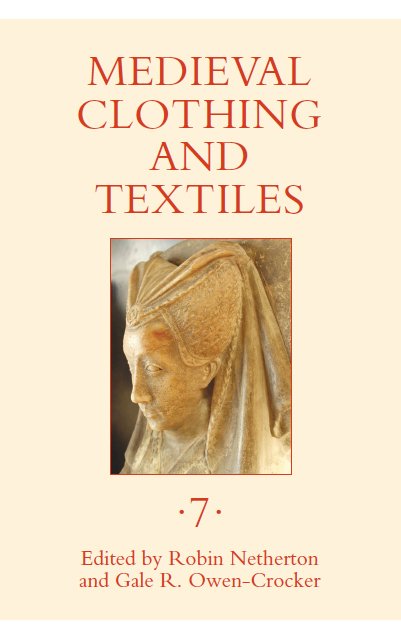Book contents
- Frontmatter
- Contents
- Illustrations
- Tables
- Contributors
- Preface
- The Empress’s New Clothes: A Rotulus Pannorum of Isabella, Sister of King Henry III, Bride of Emperor Frederick II
- Unveiling Social Fashion Patterns: A Case Study of Frilled Veils in the Low Countries (1200–1500)
- What Is the Pearl-Maiden Wearing, and Why?
- “Hys surcote was ouert”: The “Open Surcoat” in Late Medieval British Texts
- London Merchants’ Cloth Exports, 1350–1500
- Laboreria Sete: Design and Production of Lucchese Silks in the Late Fourteenth and Early Fifteenth Centuries
- Recent Books of Interest
- Contents of Previous Volumes
Preface
Published online by Cambridge University Press: 18 February 2023
- Frontmatter
- Contents
- Illustrations
- Tables
- Contributors
- Preface
- The Empress’s New Clothes: A Rotulus Pannorum of Isabella, Sister of King Henry III, Bride of Emperor Frederick II
- Unveiling Social Fashion Patterns: A Case Study of Frilled Veils in the Low Countries (1200–1500)
- What Is the Pearl-Maiden Wearing, and Why?
- “Hys surcote was ouert”: The “Open Surcoat” in Late Medieval British Texts
- London Merchants’ Cloth Exports, 1350–1500
- Laboreria Sete: Design and Production of Lucchese Silks in the Late Fourteenth and Early Fifteenth Centuries
- Recent Books of Interest
- Contents of Previous Volumes
Summary
Volume 7 of Medieval Clothing and Textiles focuses on the later medieval period—from the thirteenth to the fifteenth centuries—and pays special attention to the surcoat.
Four of the articles illustrate the rich information on dress and textiles to be gained from non-literary texts. Benjamin Wild discusses a cloth roll recording royal purchases of cloth from 1234 to 1235 associated with the prestigious marriage of Isabella, younger sister of King Henry II of England, to Emperor Frederick II. The purchases include gifts for the Emperor, clothes to be worn by the King at Easter, the bride’s trousseau, garments to be distributed to persons in service of the bride and her husband, and vestments for her chapel. The Latin text is here edited for the first time, and is accompanied by a translation. Mark Chambers focuses on the problematic garments called surcoats, discussing the “surcot ouvert” and the “surcot clos” in the multilingual context of fourteenth- and fifteenth-century Britain. He contrasts the contemporary evidence with the assumptions of modern costume historians, making new suggestions about chronology and gender distribution. Christine Meek examines the details of textile transactions documented in brokers’ books from the Italian silk center of Lucca in the early fifteenth century, comparing these records with other texts, especially the regulations for the production of silk that had been established in the previous century. The wide-ranging discussion includes sources of silk, prices of raw material such as thread and dyestuffs, the names and specifications of different silks, the destinations of finished products, and designs and designers. John Oldland and Eleanor Quinton examine customs accounts to consider England’s export trade in wool and woollen cloths in the fourteenth and fifteenth centuries, addressing prices, destinations of exports, the professional associations of those who shipped the cloth—which included grocers, fishmongers, and ironmongers who traded these goods for the items they wanted to import, as well as the more obvious mercers and drapers—and their interaction with the foreign traders present in England.
Turning to literature, Kimberly Jack revisits a famous late-fourteenth-century Middle English poem, Pearl, to reassess the dress of the Pearl maiden.
- Type
- Chapter
- Information
- Medieval Clothing and Textiles 7 , pp. xi - xiiPublisher: Boydell & BrewerPrint publication year: 2011



